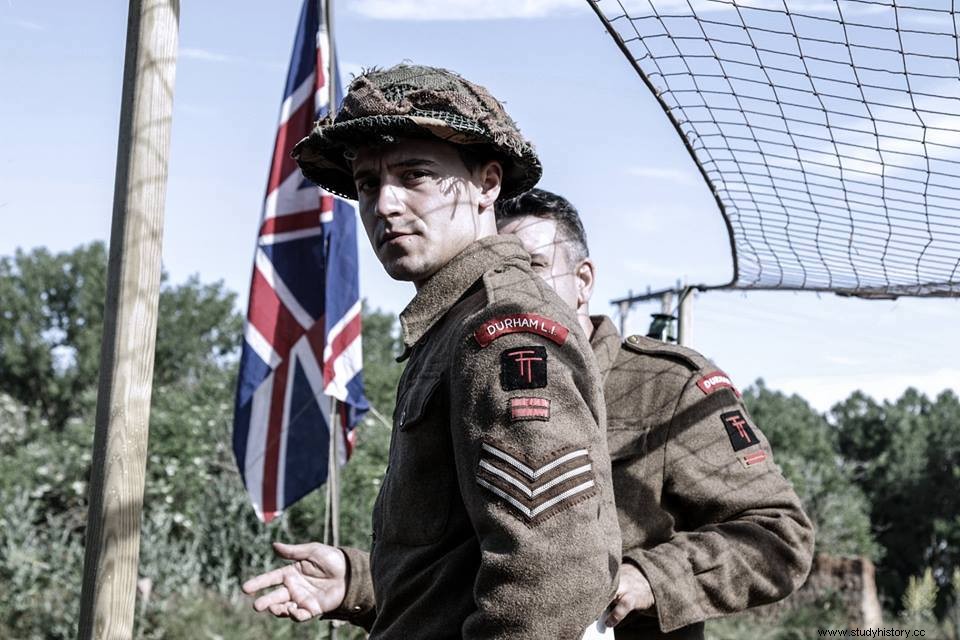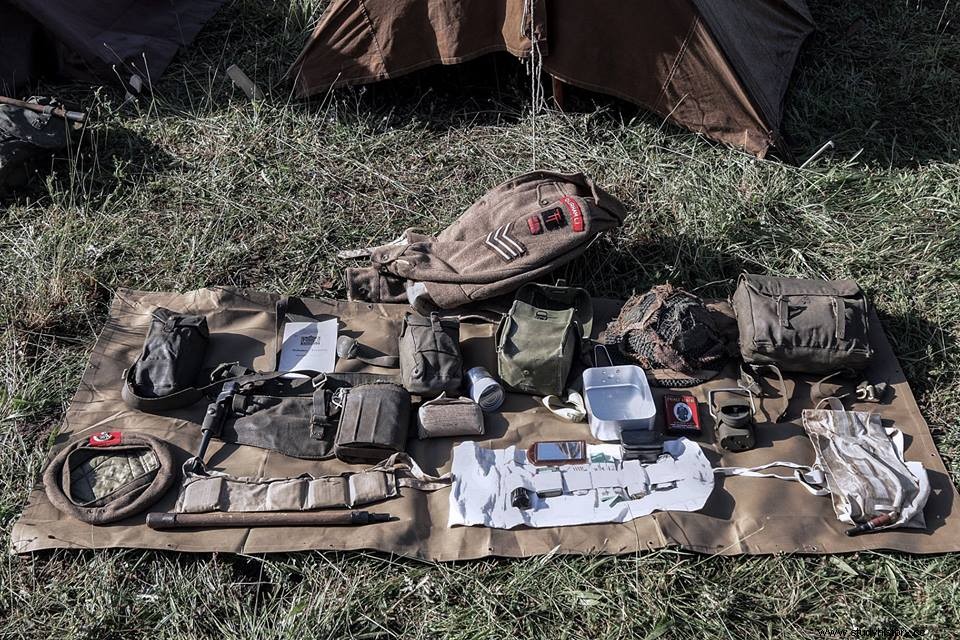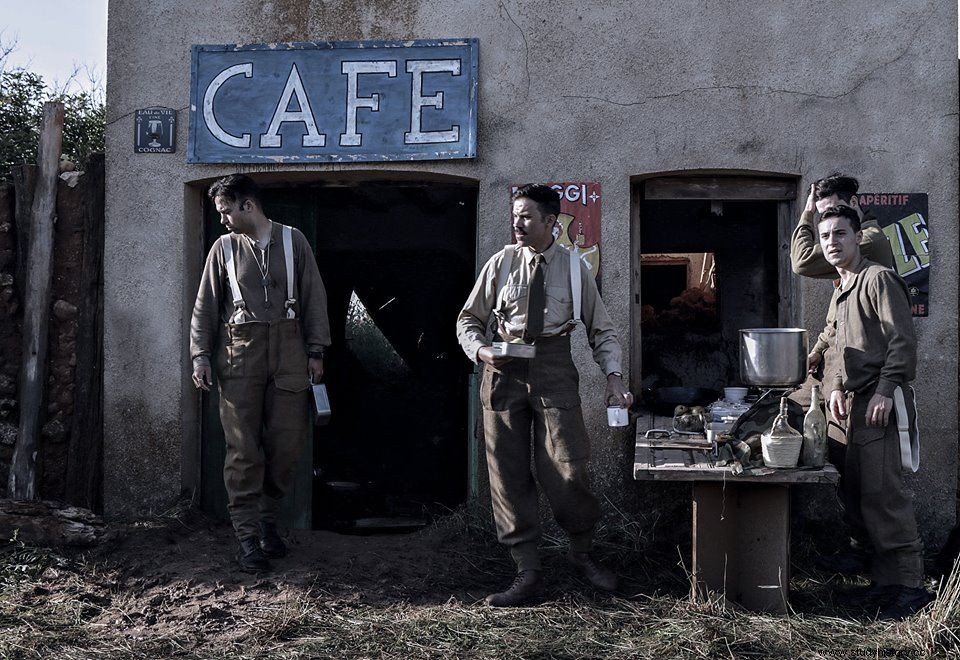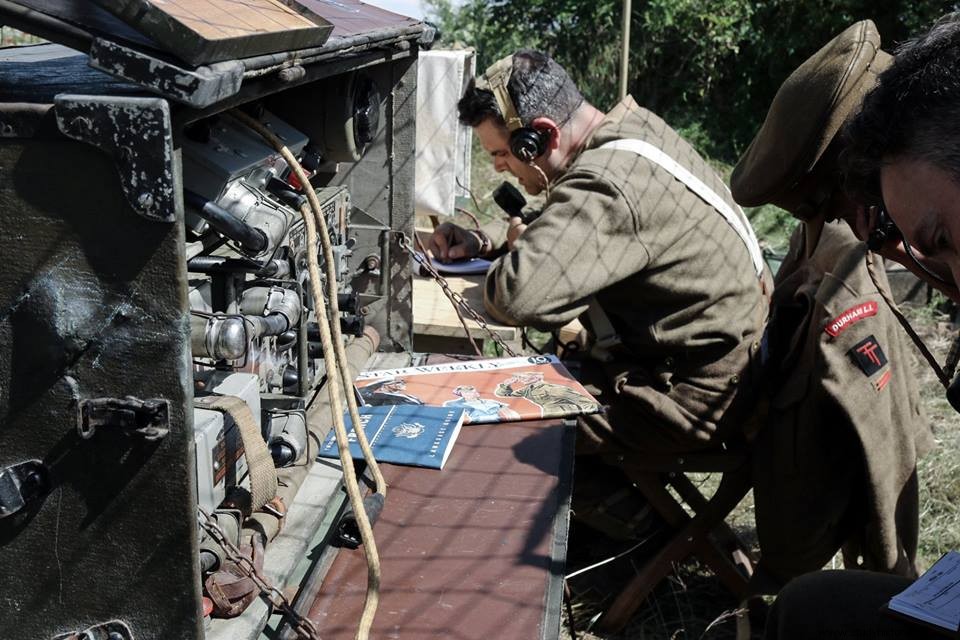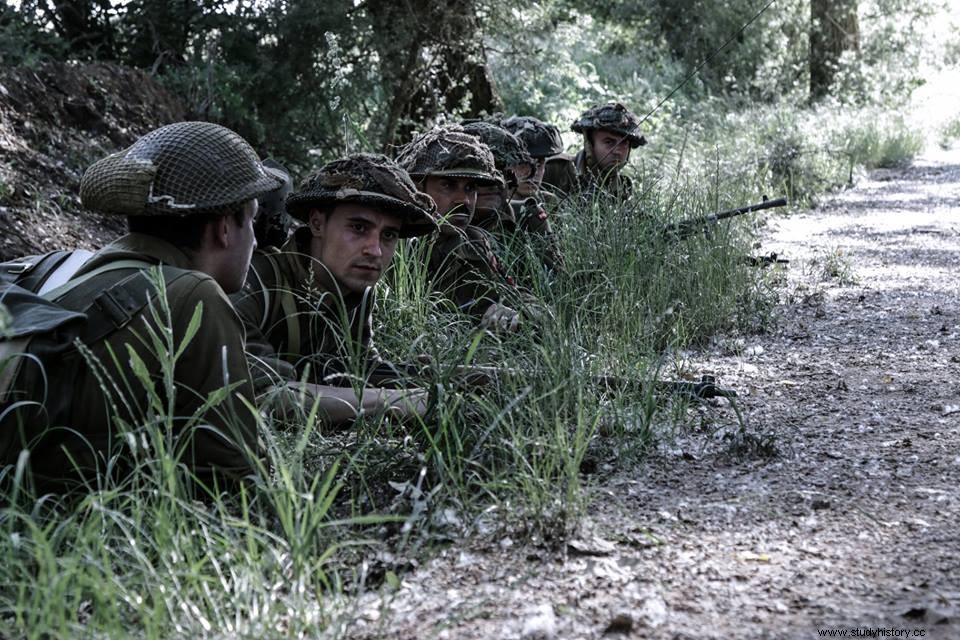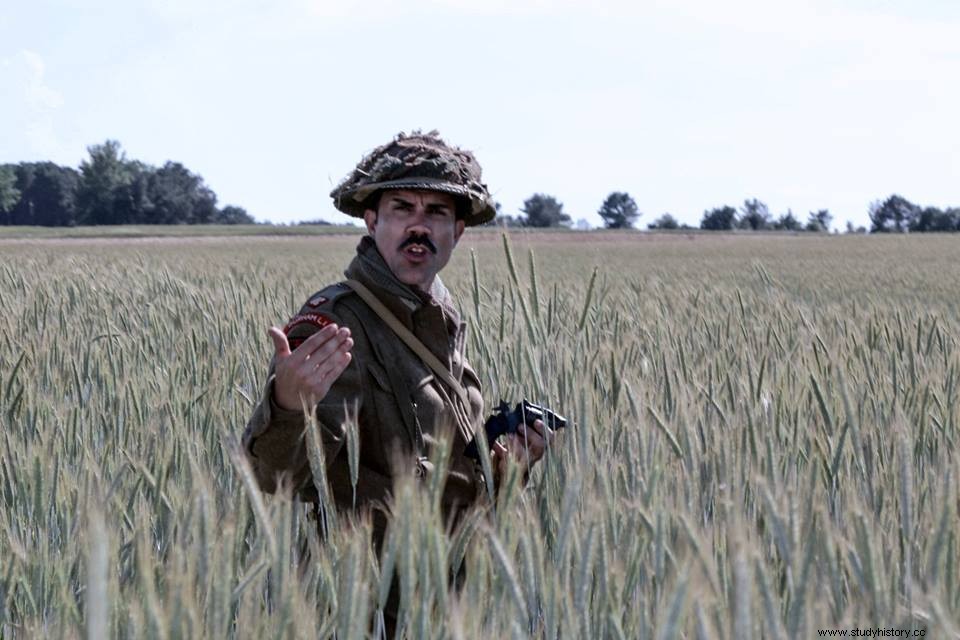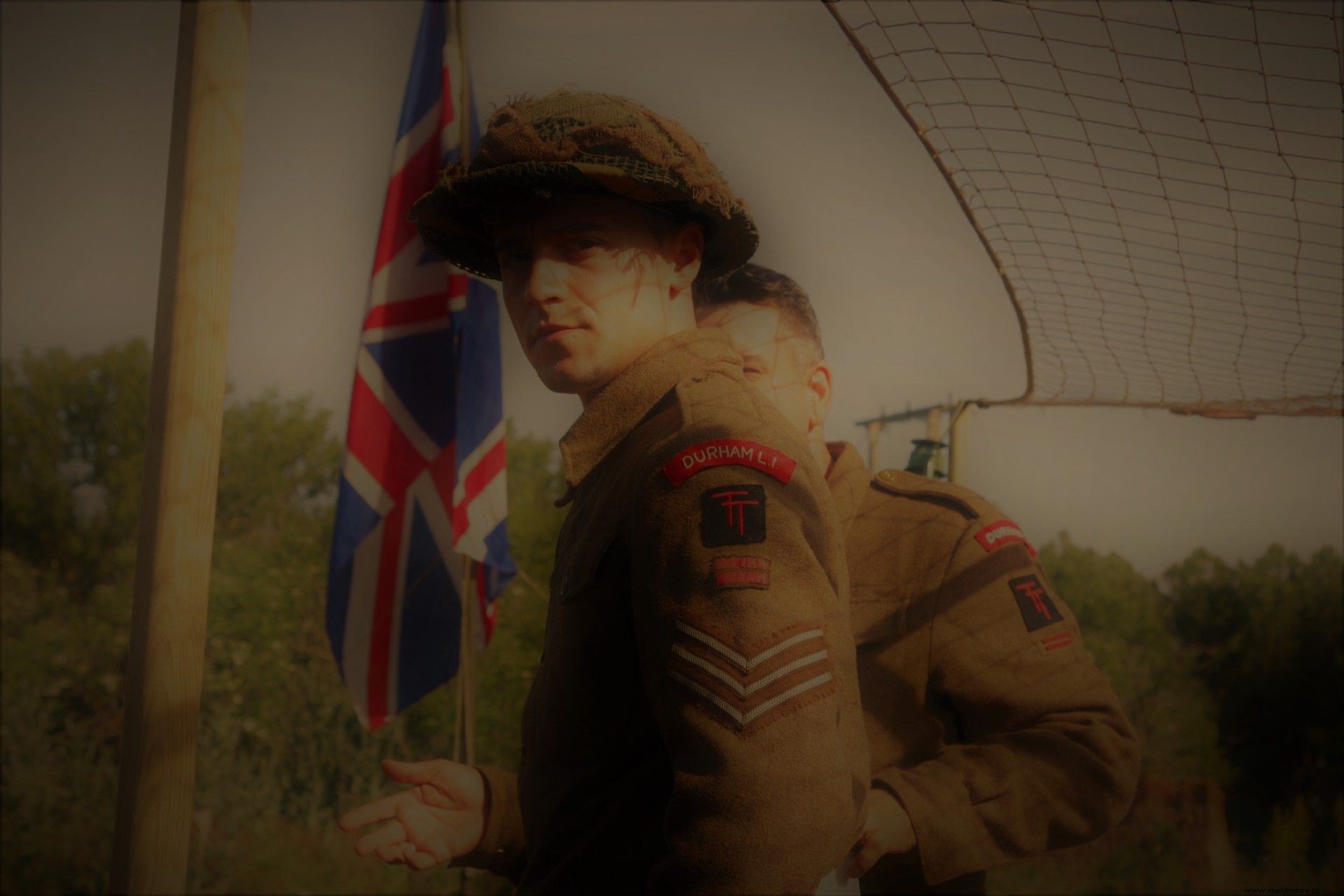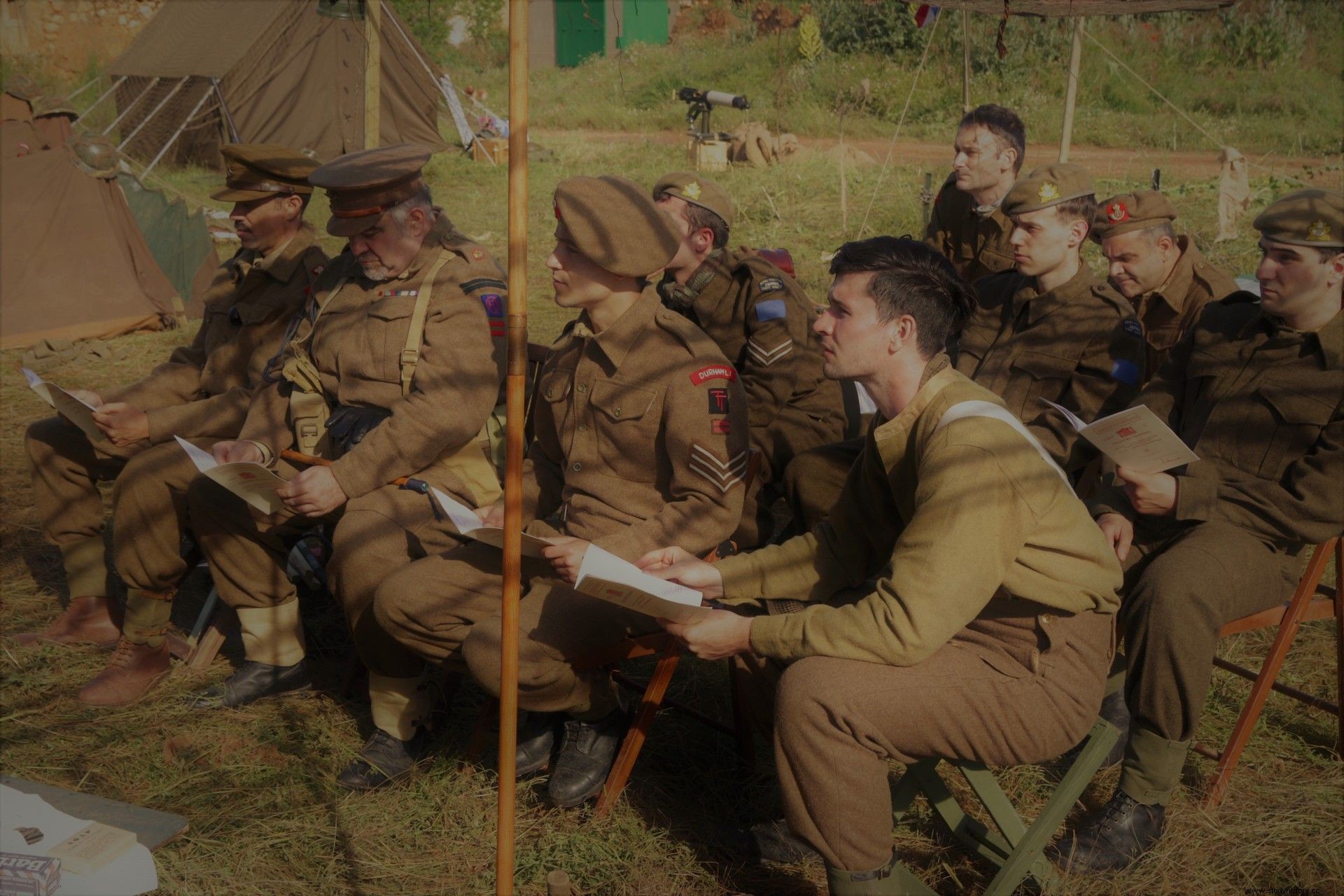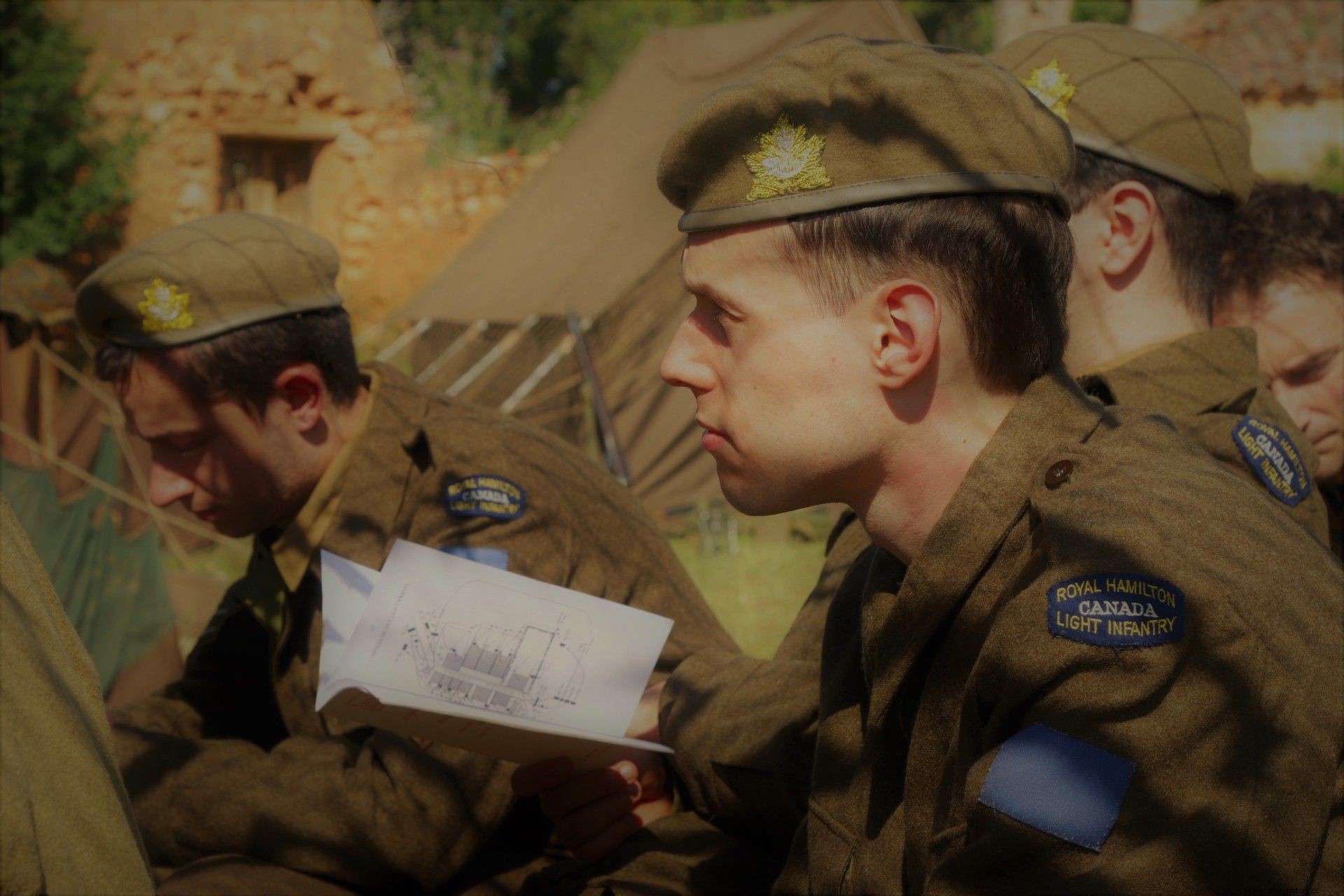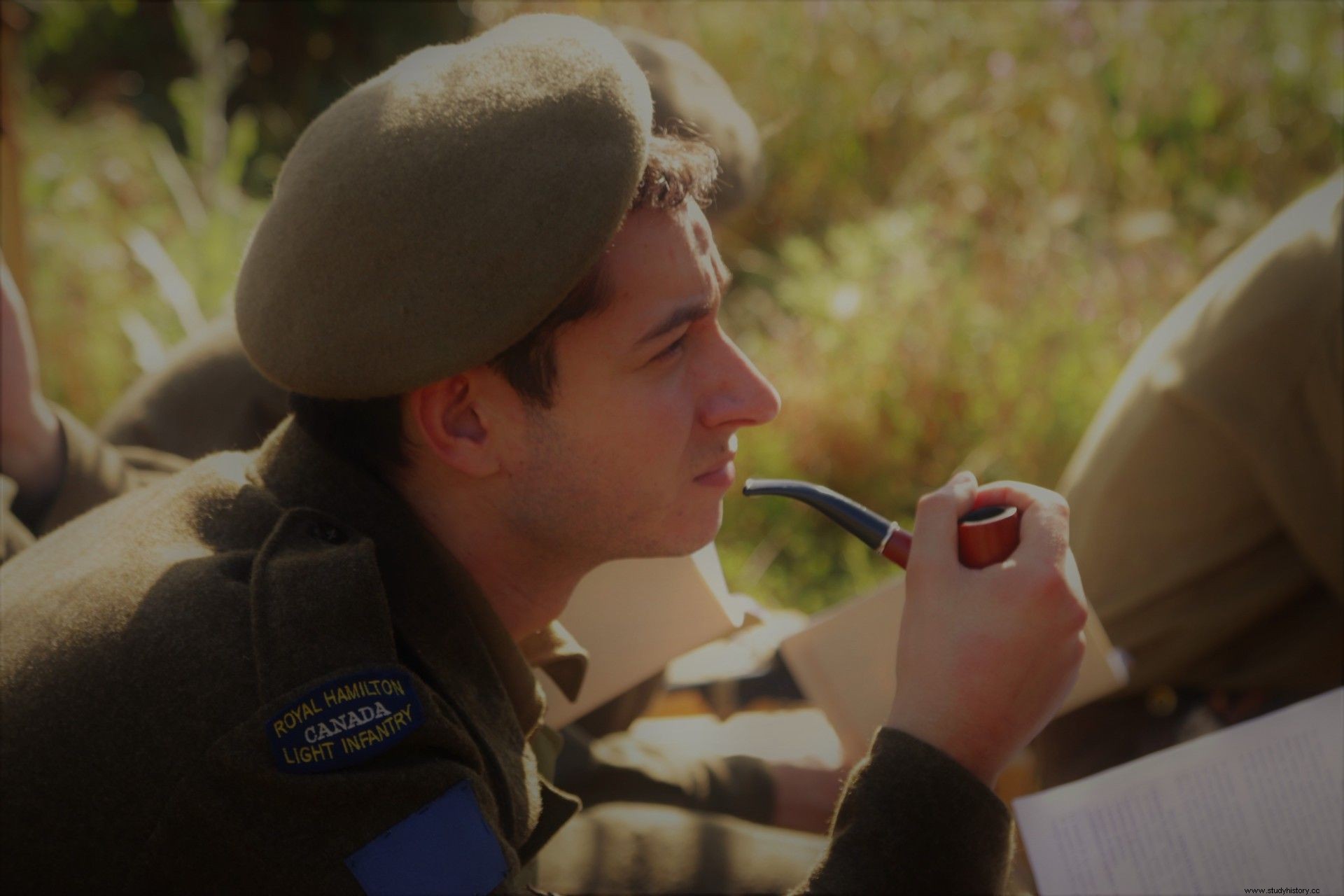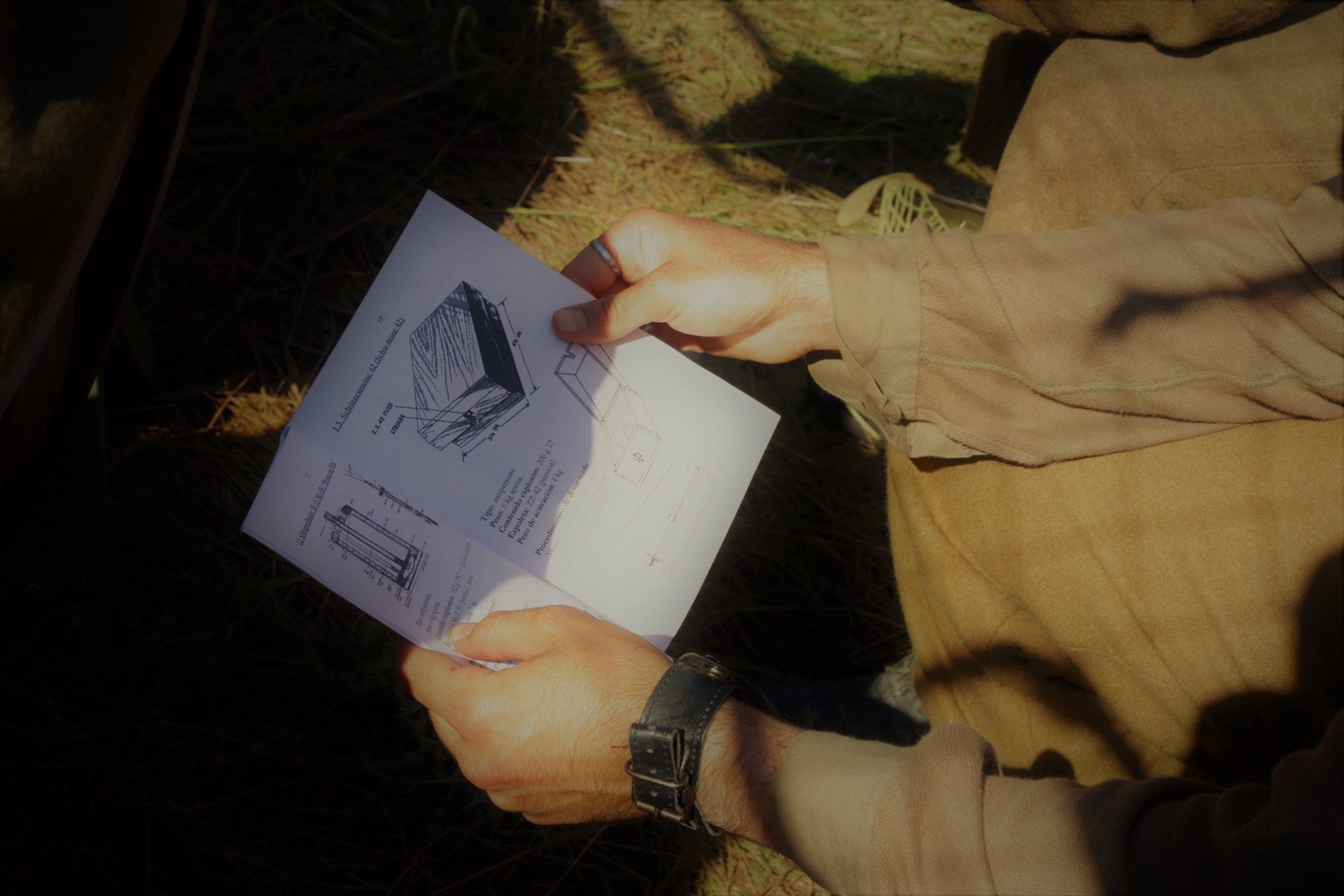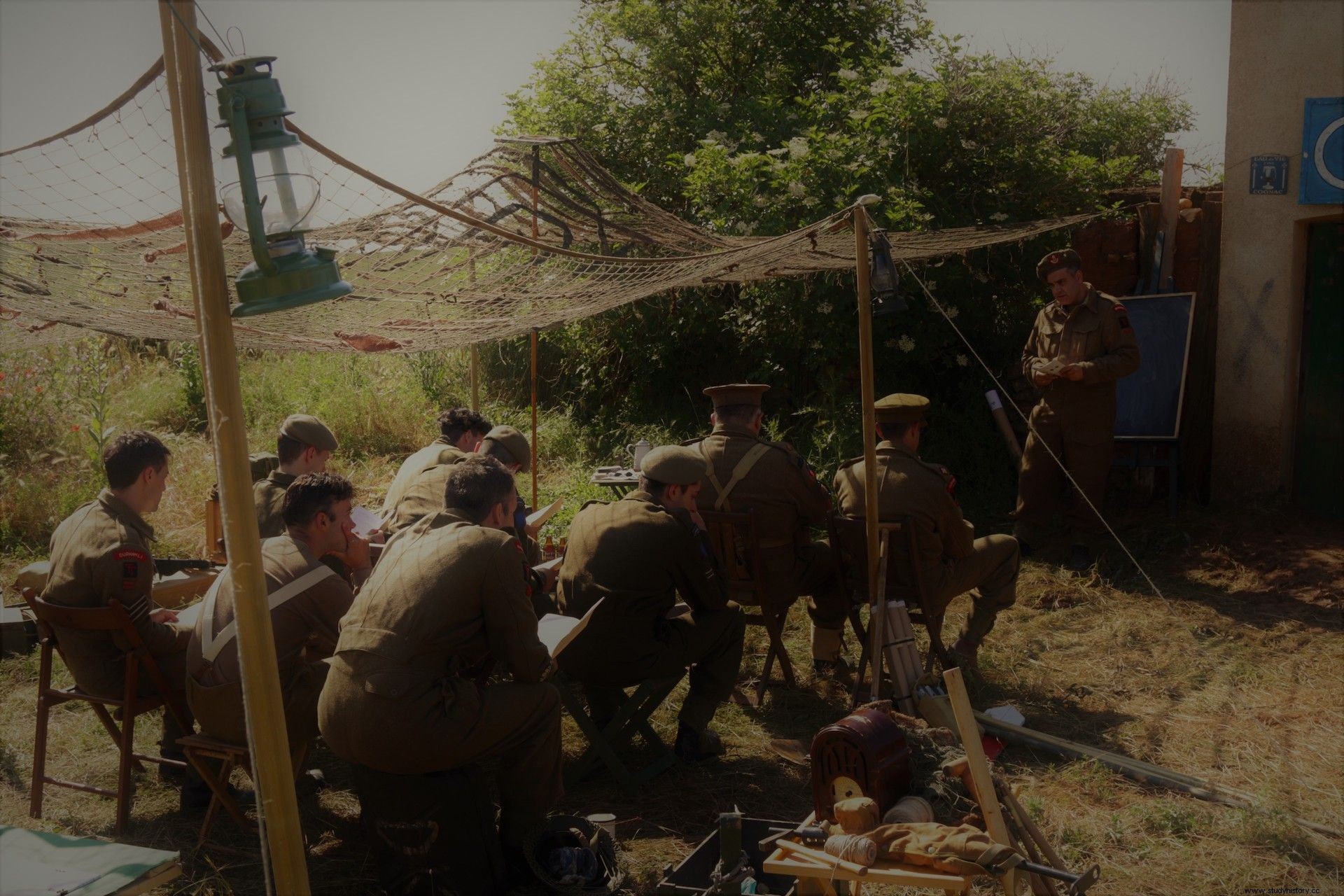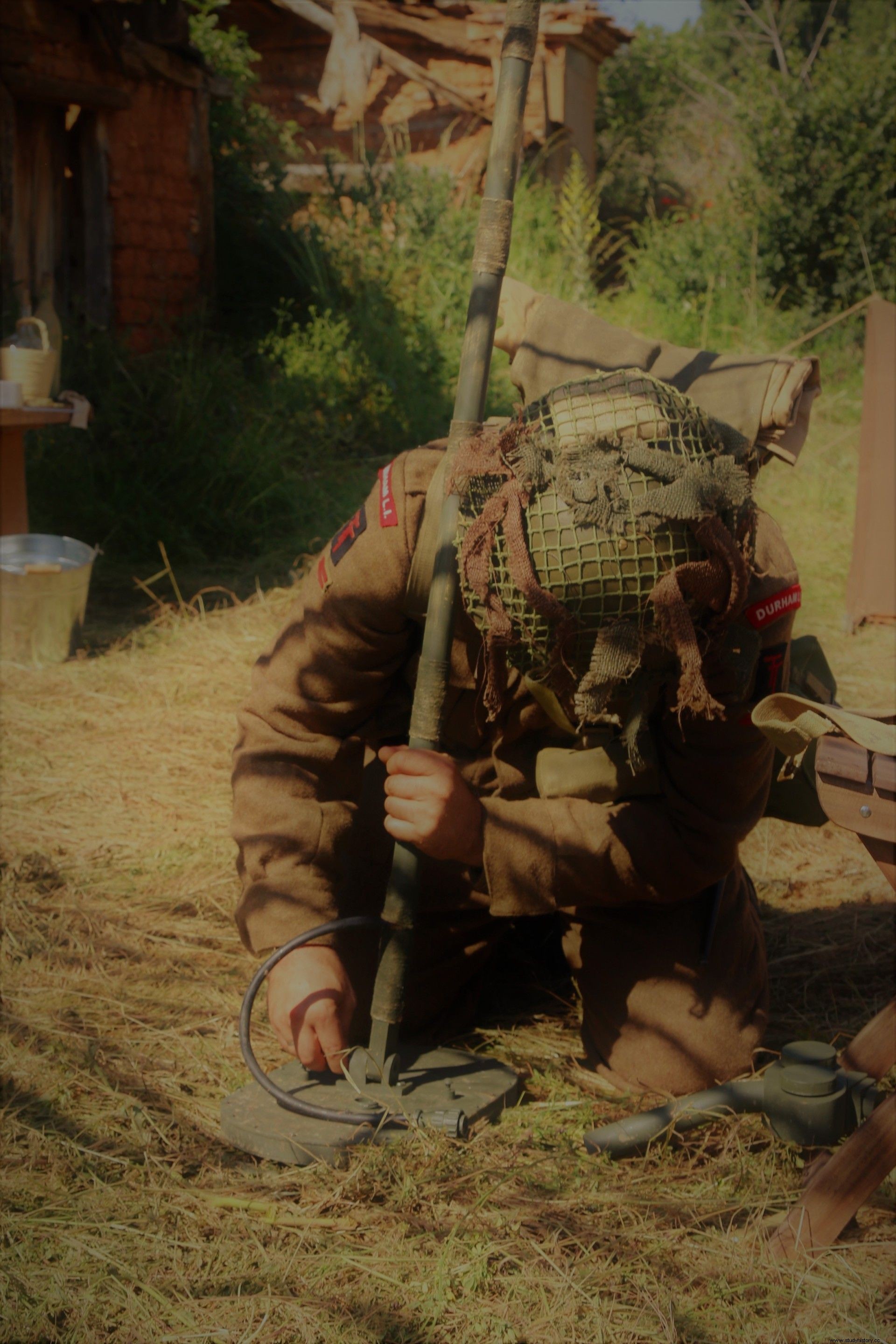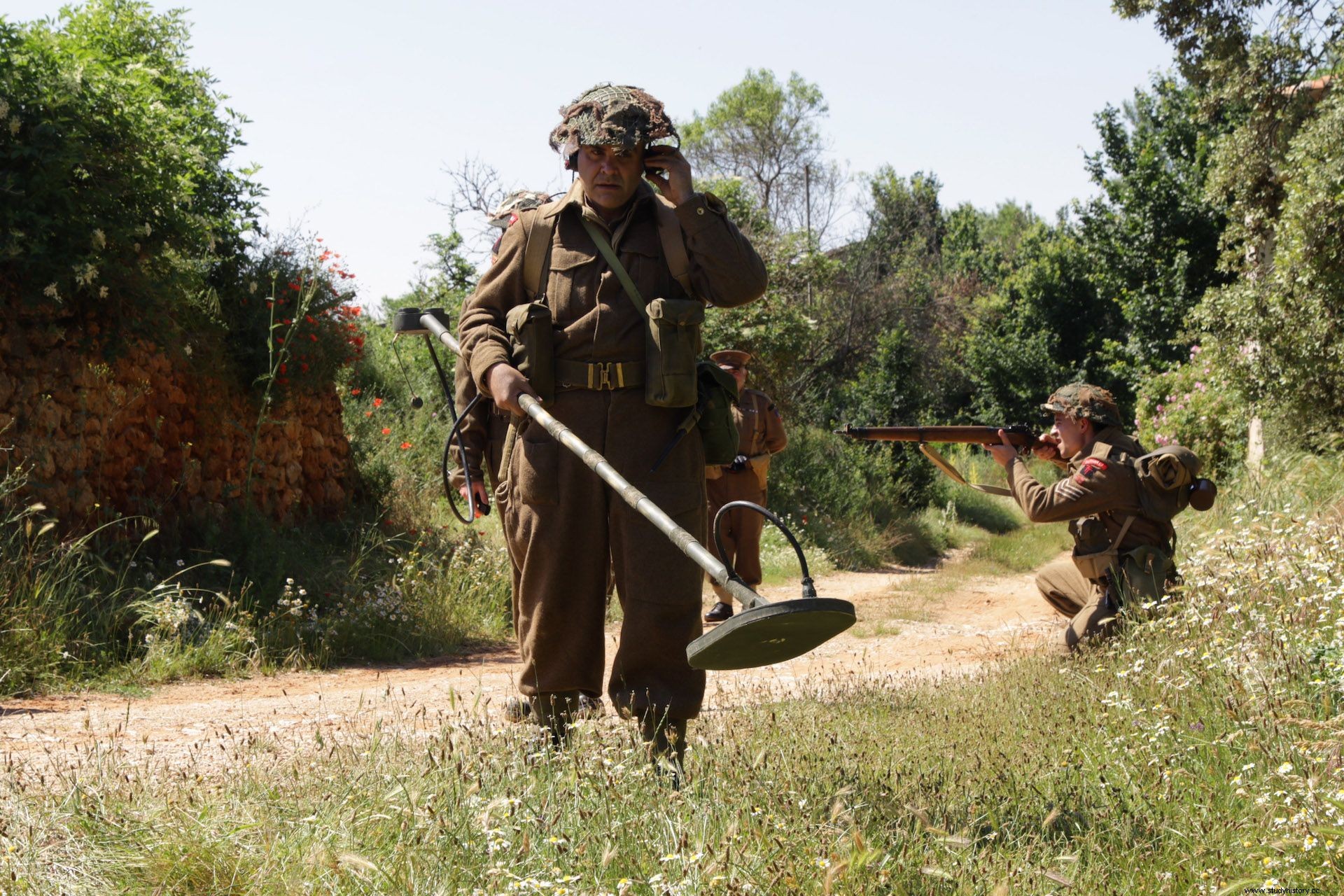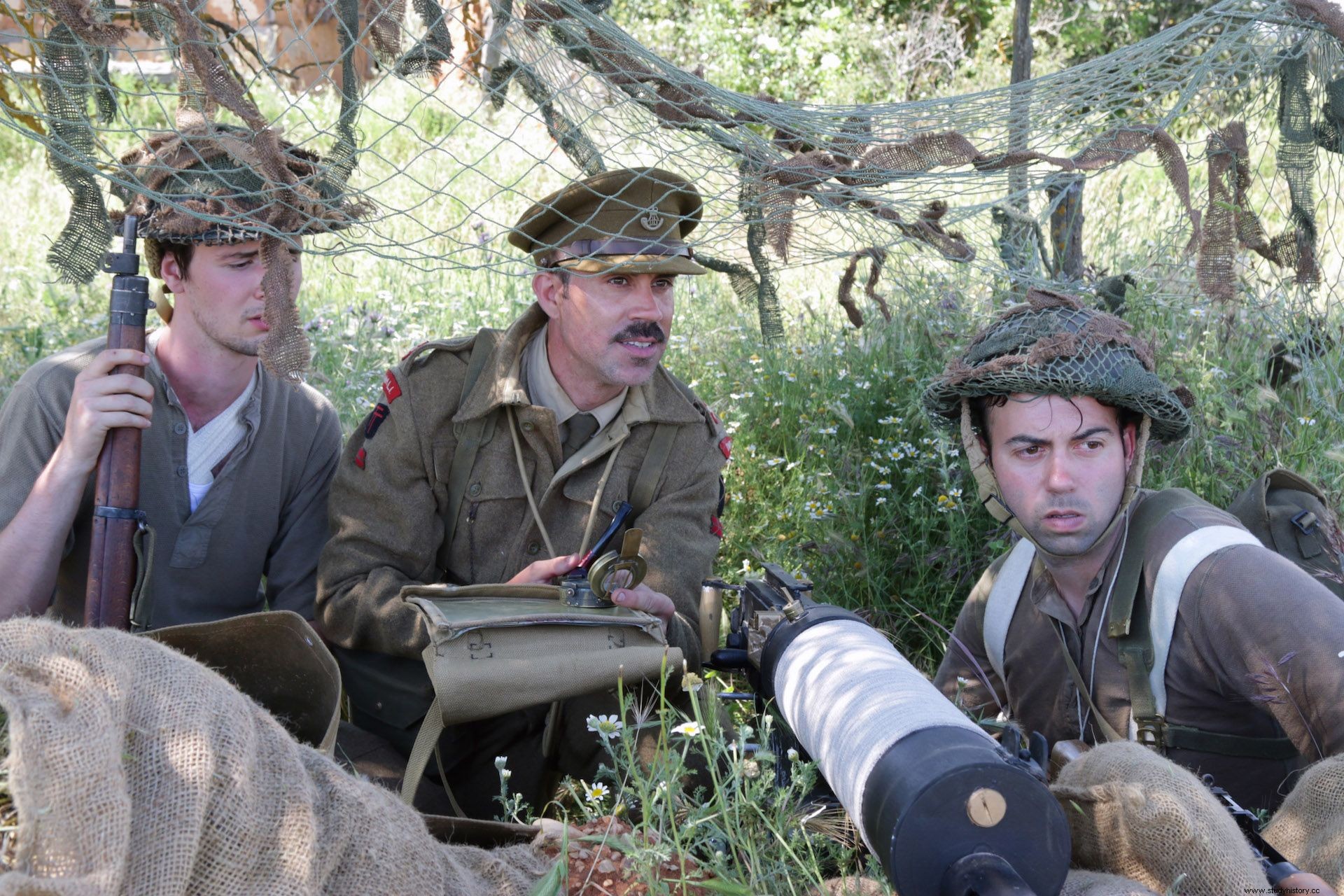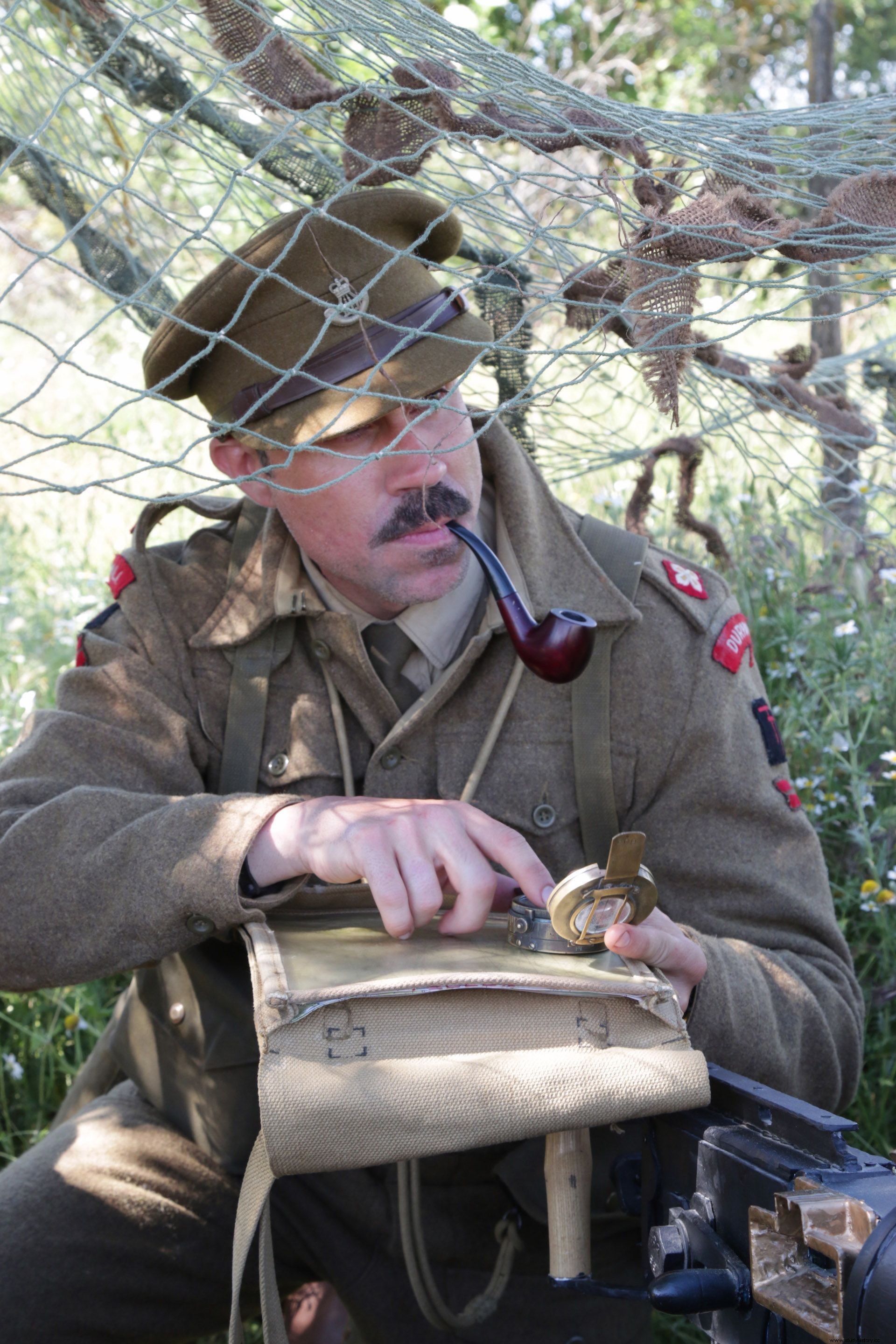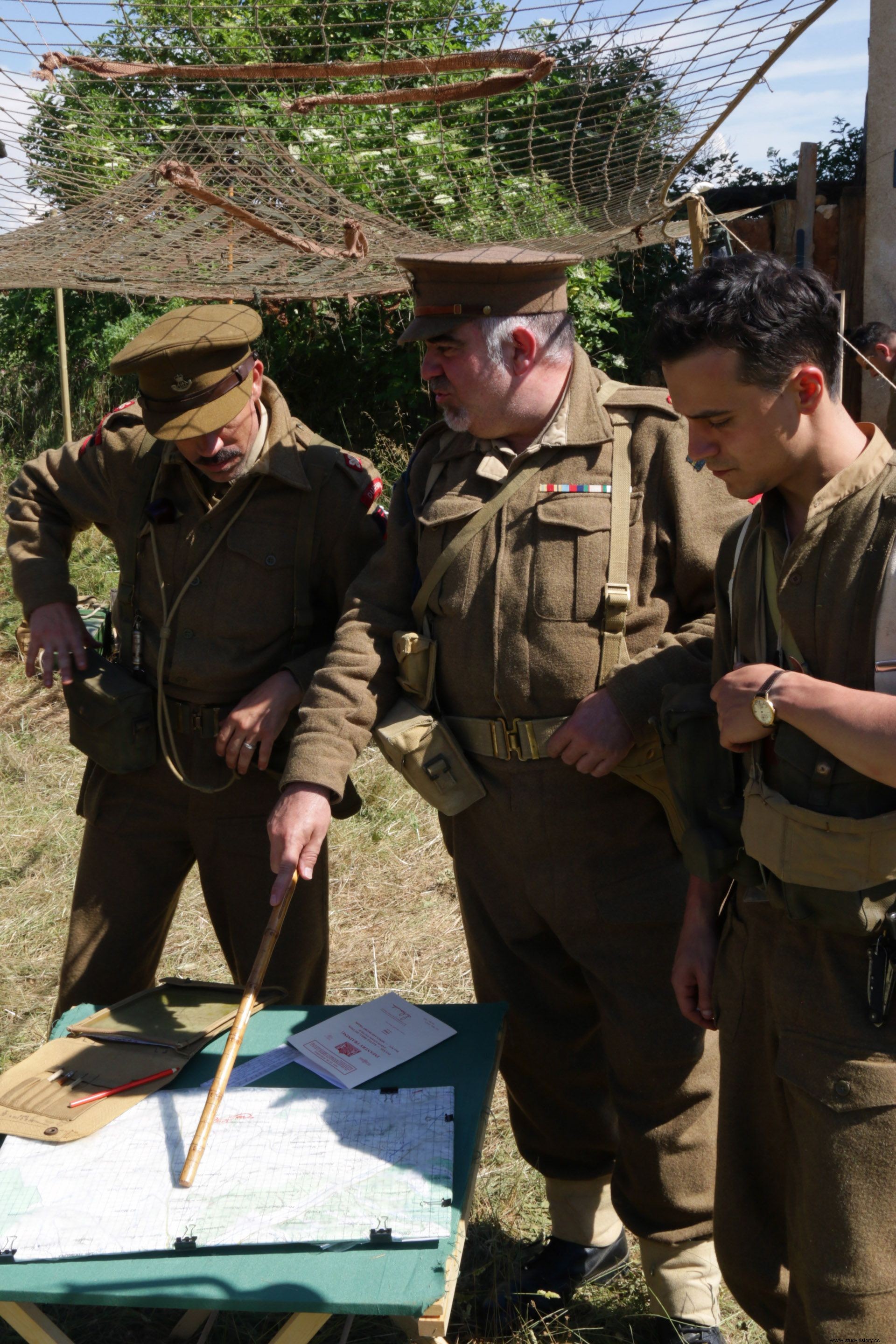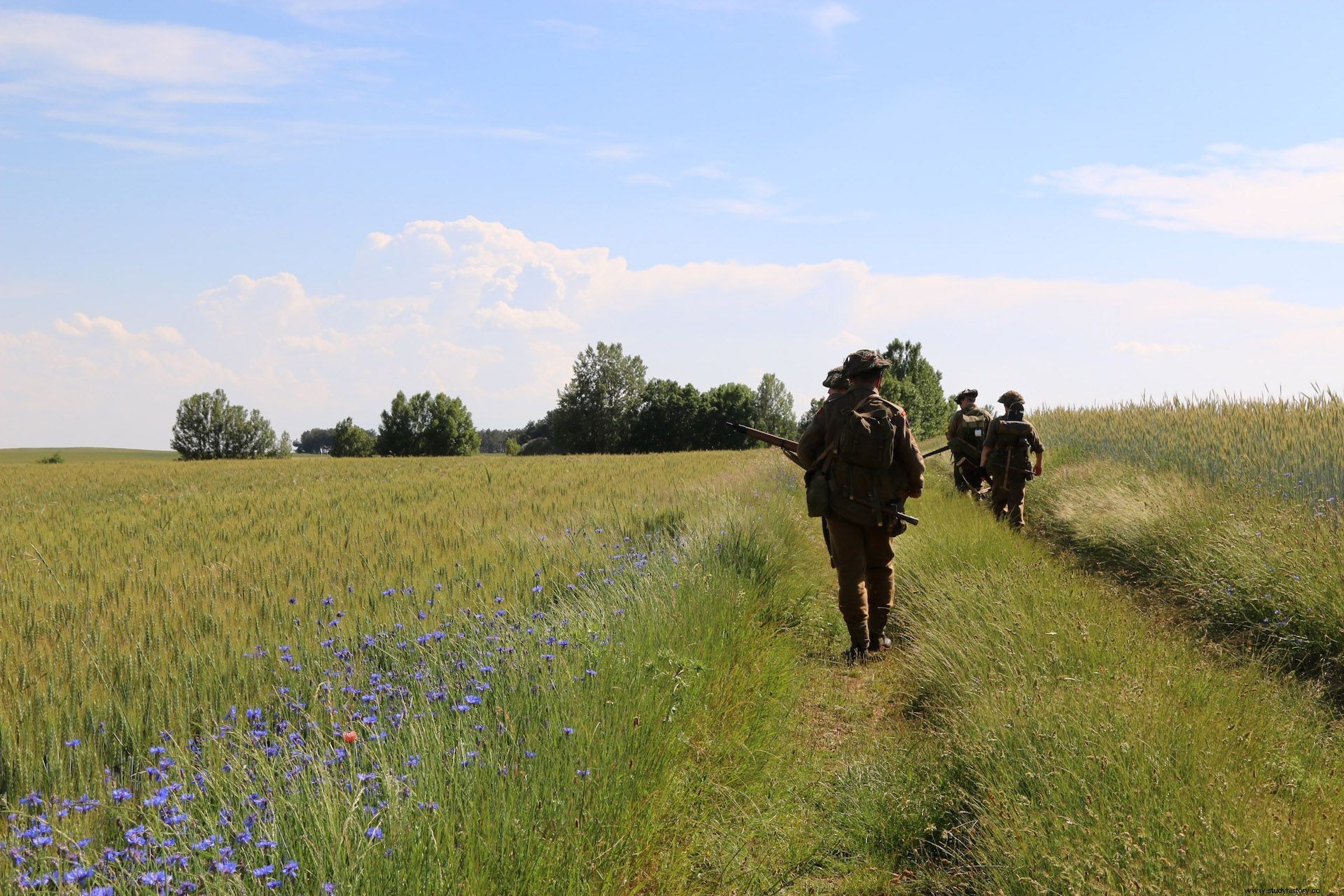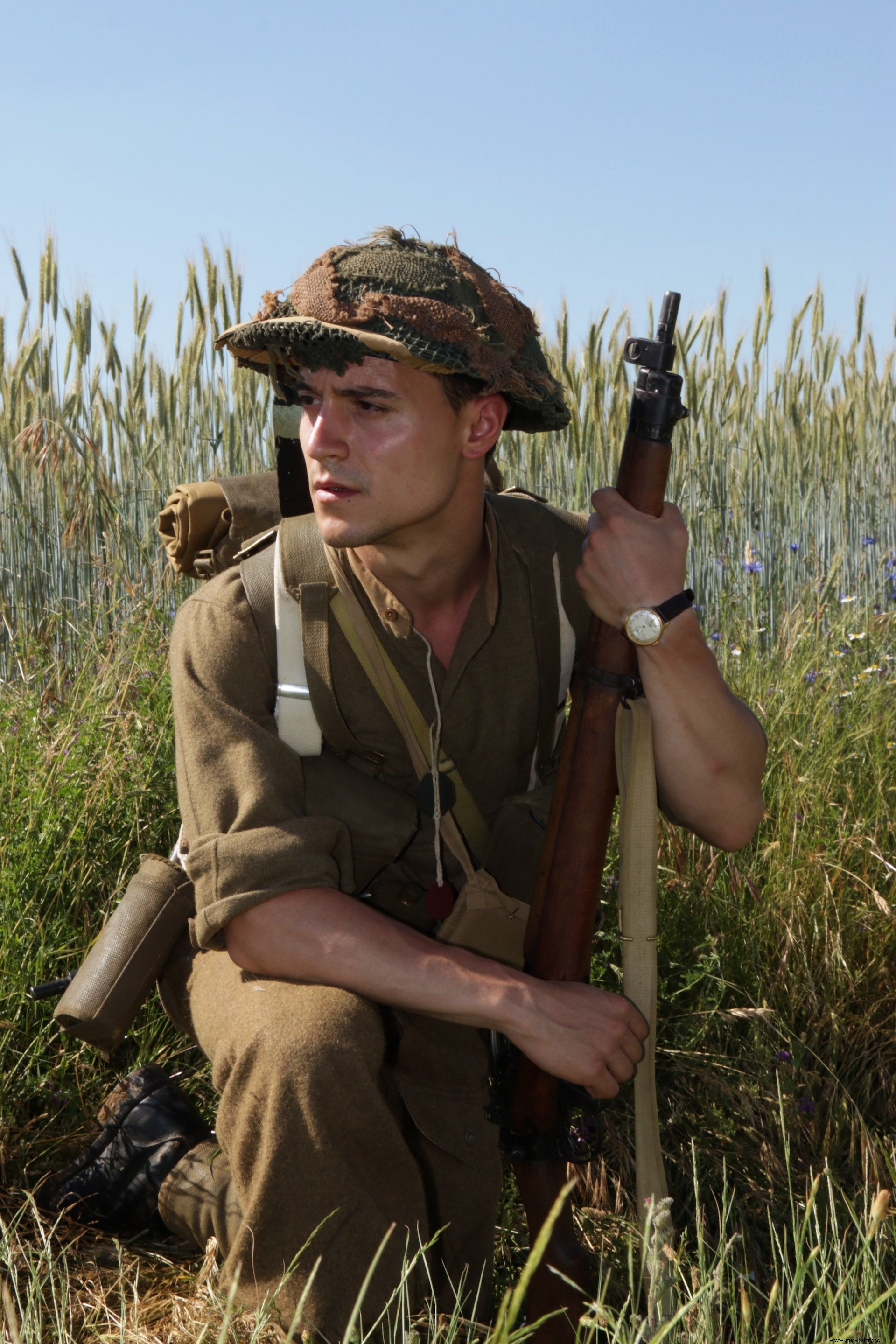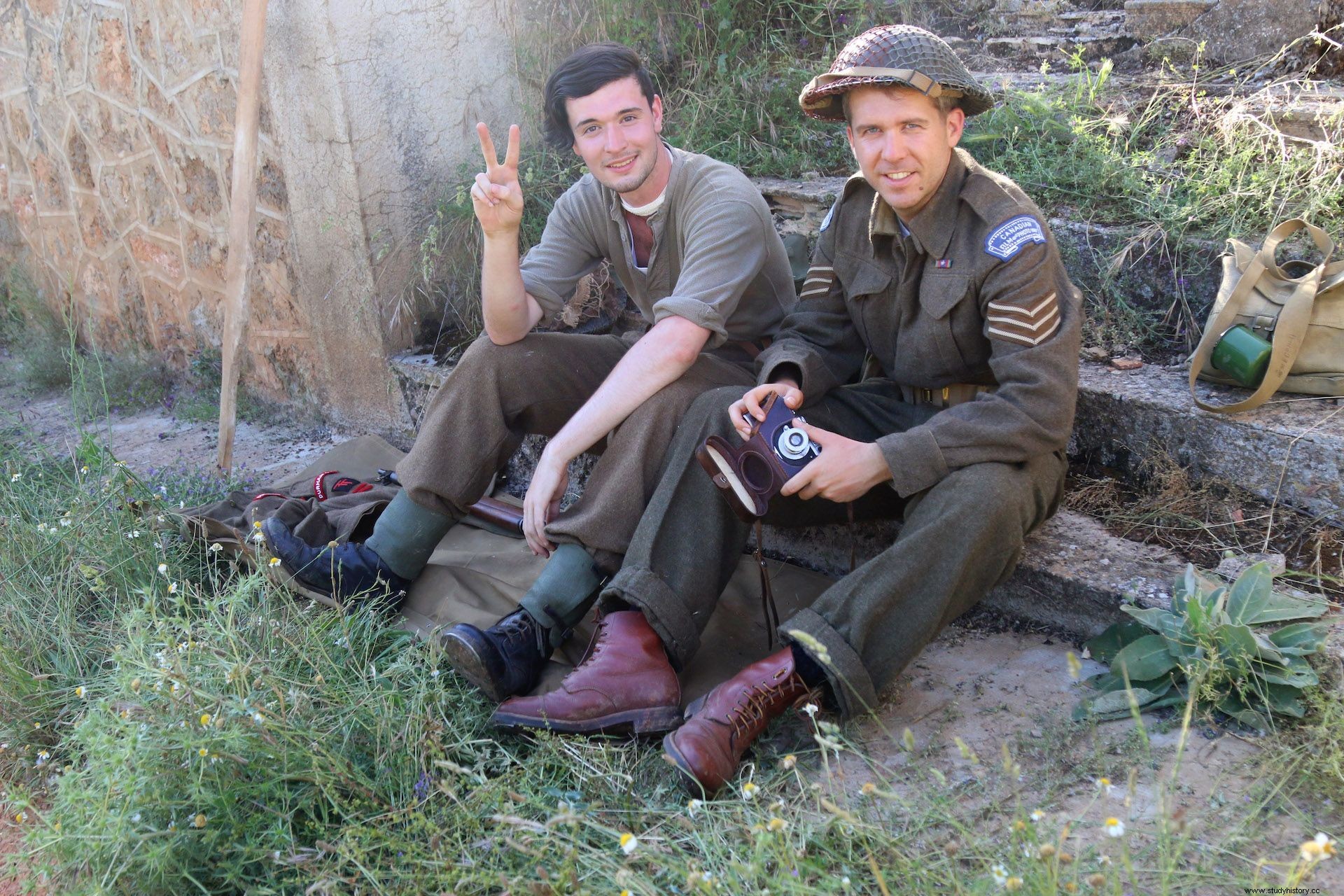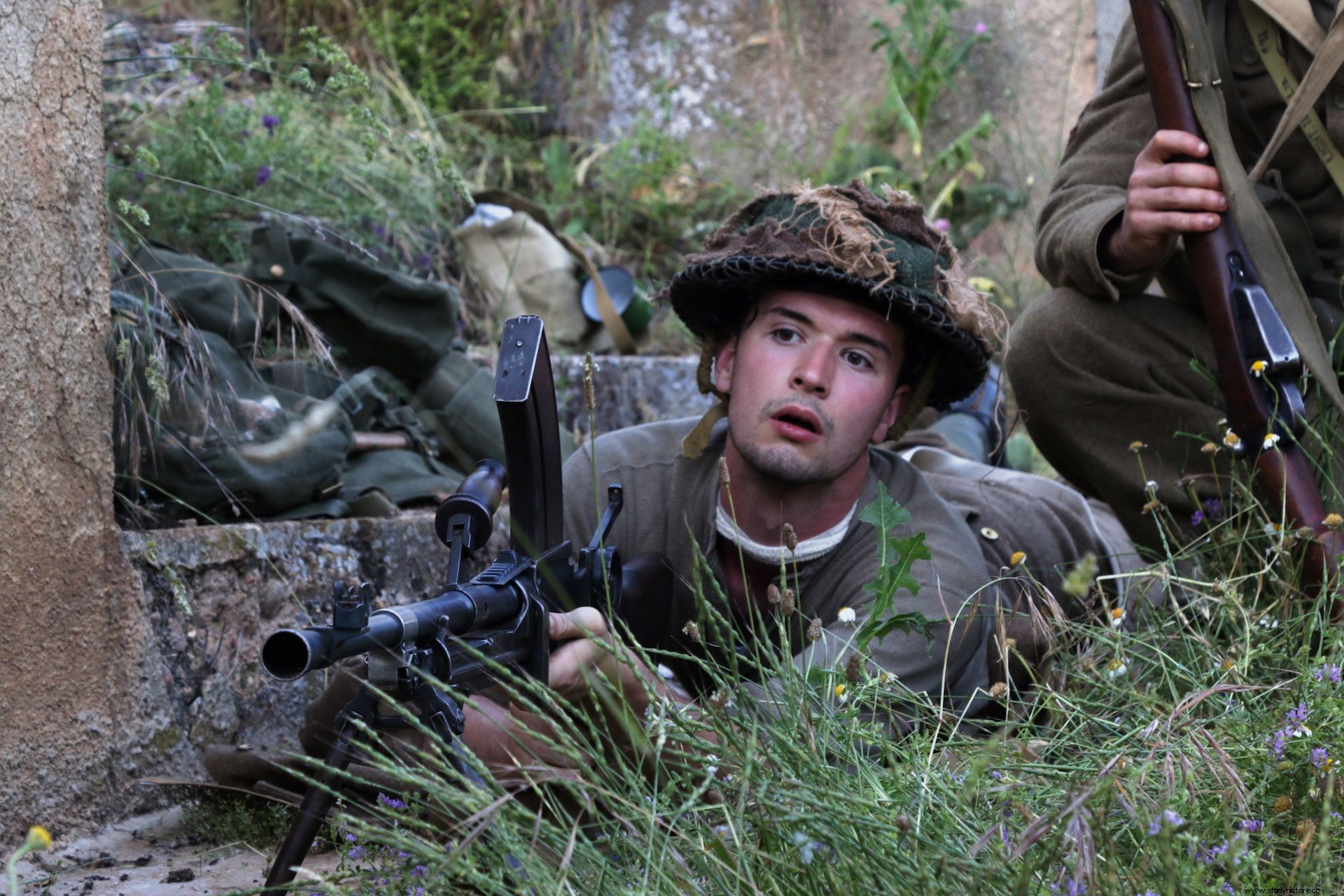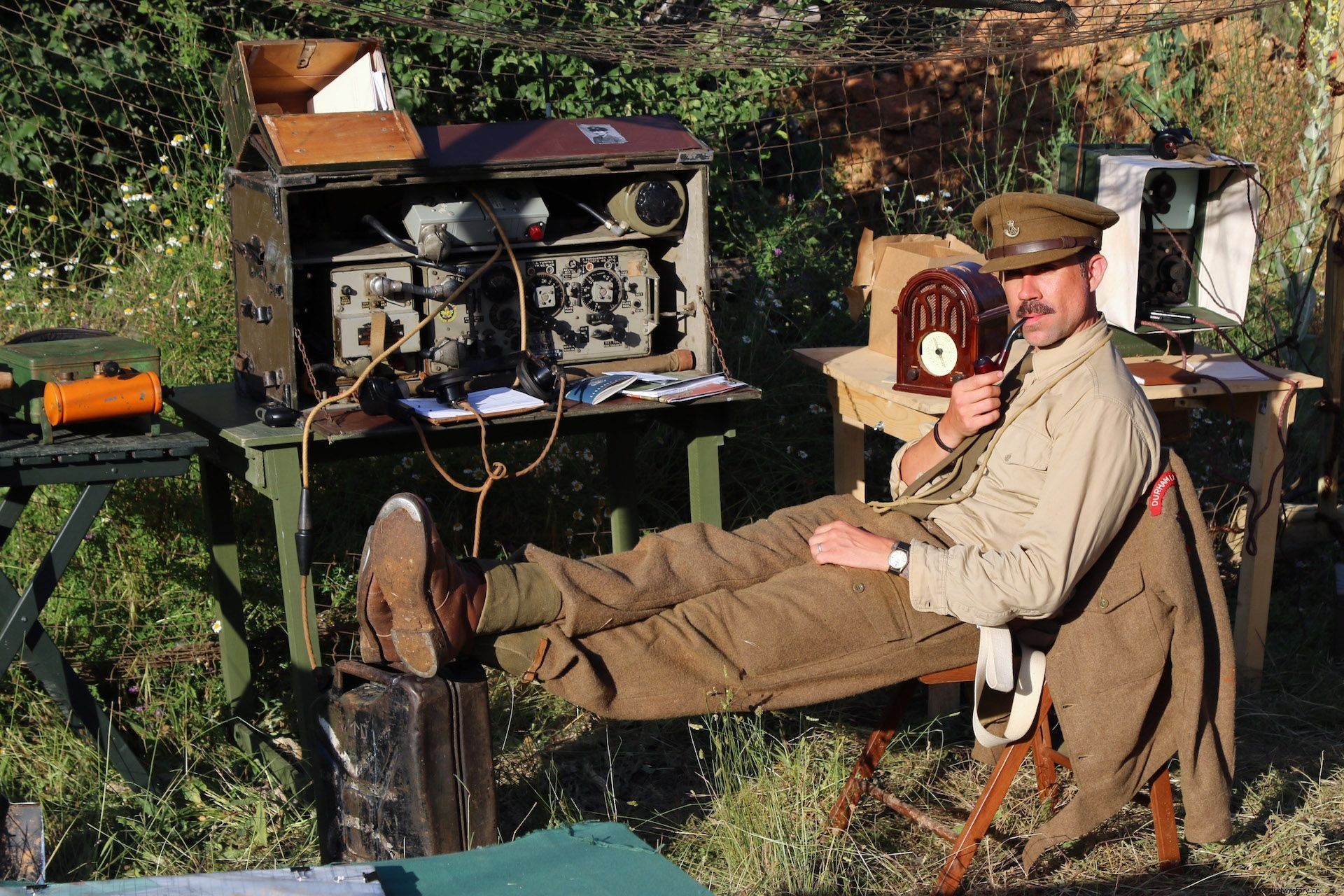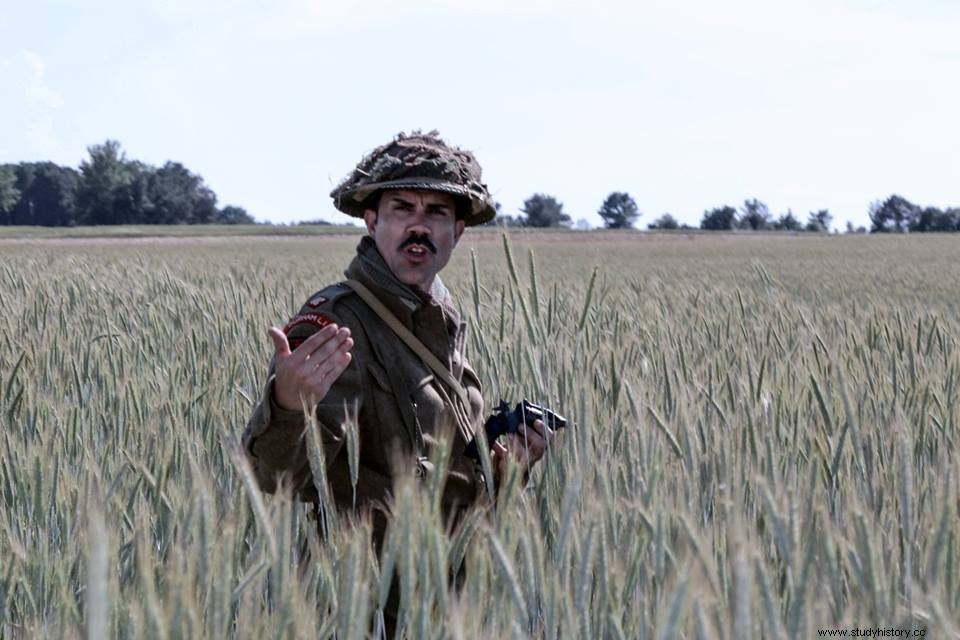
A flat helmet stands out among the unharvested wheat, to show us little by little, the characteristic profile of a British soldier in the Second World War . Carefully observing the environment, he raises his hand in a forward gesture that, between slight tinkles and creaks, gives way to new figures covered by his camouflaged helmets. Below them, the men keep glancing nervously ahead of them, moving forward crushed by the weight of their equipment and the midday heat, while the radio operator whispers their position into the Bakelite microphone. Although we could think about it, we are not in the Battle for Normandy of 1944 , nor in the shooting of a new movie, since this scene worthy of a 1940s newsreel is just one more of the many historical re-enactments of the Second World War that take place throughout the country.
Despite being apparently foreign to us, such is the interest that this conflict arouses among fans of war history, that for a few years they have not stopped increase the number of participants in this type of activity, organizing quality meetings and increasingly elaborate themes for this purpose. Their motivations are many, and even the approaches to enjoying this hobby are varied, but what is historical reenactment? By definition, recreation is a hobby in which the participants recover some aspects of a specific episode or a broader historical stage. To do this, they use clothes and utensils typical of the period to be recreated, seeking the greatest possible historical accuracy. In parallel, the term Living History is used , living history, which would be one more step in the involvement of the re-enactor, by trying not only to look like a character of the time, but also to try to live like them or "enjoy" their same life experiences. The objectives of both can be varied, including from a merely recreational component, educational, research through experimental archeology or even commercial.
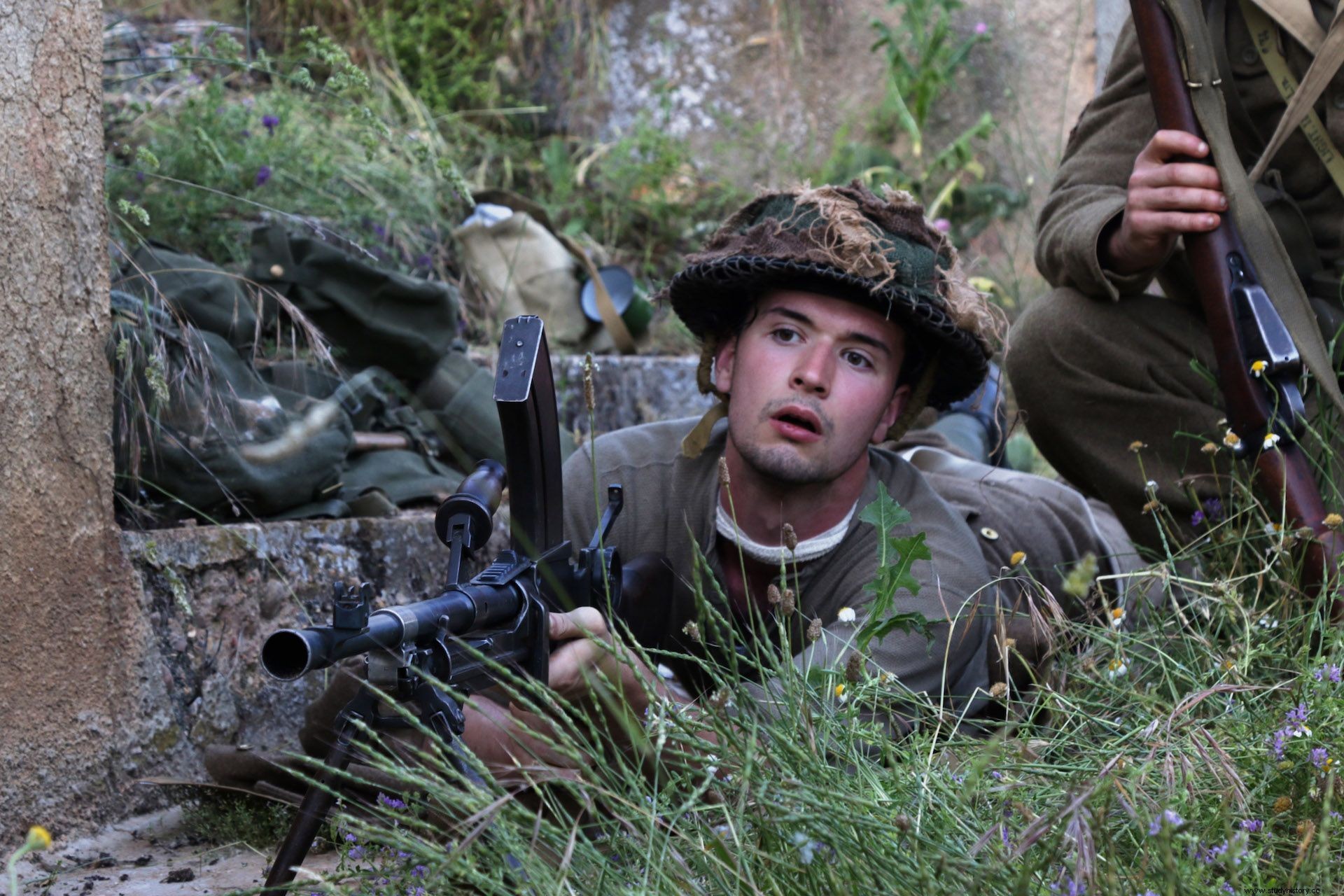
The historical recreation of the Second World War, although maintaining the same spirit, presents its own characteristics marked by the relative temporal closeness to the events, the presence of combatants still alive and the possibility of acquiring abundant period material of all kinds. This causes that the information at the time of equipping is extensive, allowing a large dose of verisimilitude, accentuated in those groups that not only take care of their appearance but also train, eat and sleep like their admired veterans.
In this line of action that sets the guidelines for the purest Living History, we could have one of the clearest examples at the national level in the event that members of the Durham Light Infantry Association and the Sancho de Beurko Elkartea Association starred during an intense weekend last June. To do this, simulating in detail a camp in the rear of the Norman front, the long-suffering reenactors had to face a tough program where combat rations were not lacking, theoretical courses with period manuals in urban combat, mine clearance or booby traps, day patrols, night patrols, defensive deployments, simulated assaults... Undoubtedly a busy schedule designed for the participants to get as close as possible to the sensations experienced by British combatants during the Normandy campaign.
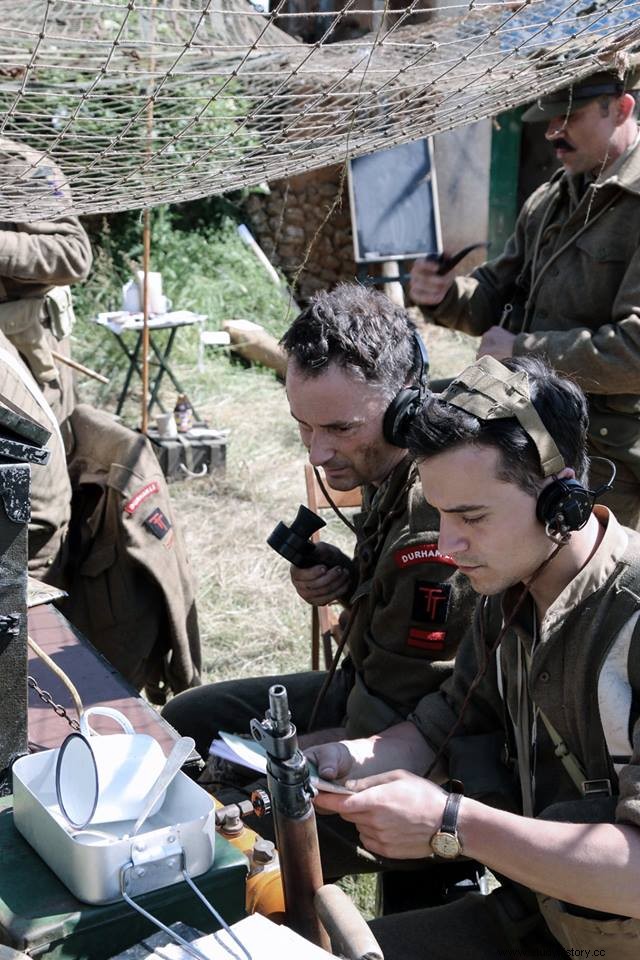
Heat, physical effort and lack of sleep lead to think that it is not exactly the ideal weekend that one would organize to get out of their usual routine, but it is precisely these factors that that add value to the experience of a reenactor. After an exhausting march wearing the equipment of a soldier from 1944 and feeding on combat rations similar to those of the time, the understanding of the books and historical events that they have starred in is much higher than that which a mere reading provides to the fan of the history. Especially this type of experience, for those who have not done military service, shows the degree of exhaustion involved in a kilometer-long cross-country march or the complexity of reaching a certain point in the middle of the night without GPS, for, after carrying out an assault , returning footwear with hobnailed boots to a tent far removed in comfort from the current ones. Personally, after these experiences, the level of admiration for those combatants who suffered daily for months only increases.
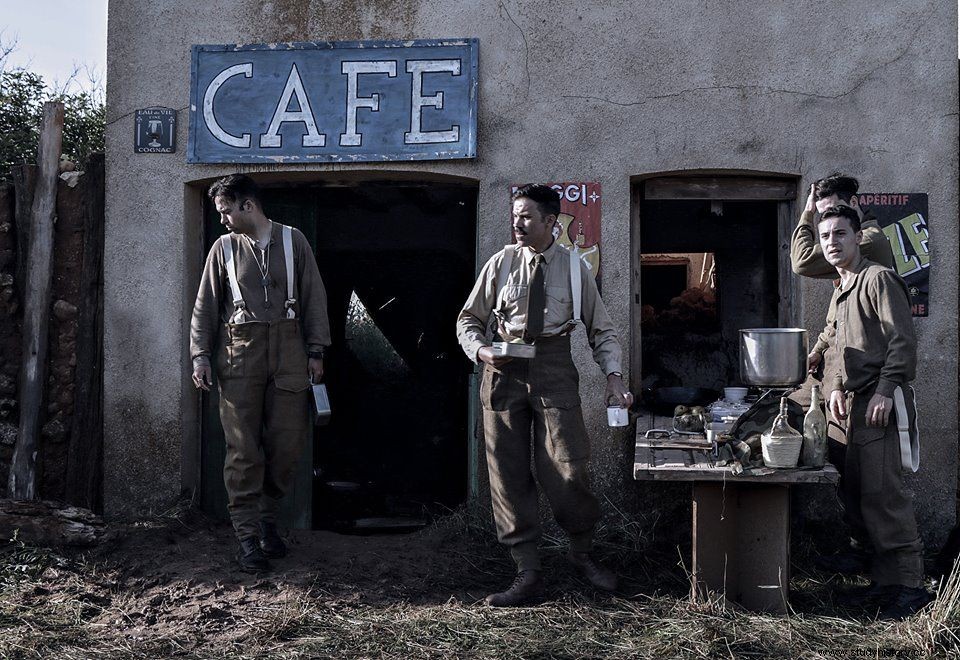
In parallel and a more technical aspect, the instruction similar to that of the period to be recreated improves the performance in future actions, by helping to adopt the movements and procedures in which the soldiers of World War II based their way of fighting or their daily routine. It also helps to get to know and become familiar with 80-year-old equipment that, although you can buy them, it is not until you give them a "real" use that you do not always understand the reason for their design or how to use them.
Any self-respecting recreation seeks to leave a graphic testimony of both the actions it develops, and the equipment of the participants and for this, on this occasion, the organization opted for the good work of Oscar Galansky . Known re-enactor thanks to his YouTube channel Tropa Guripa, for this occasion he took on the role of a cameraman in the ranks of the Canadian Army Film and Photo Unit (CFPU). As one more he took part in all the activities, joining as a war reporter to obtain a series of snapshots with modern equipment and of the 40 that testify to the good work done by both associations.
